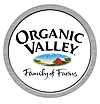
It only makes sense that farmers should know a thing or two about growing cycles. However, most members of the Organic Valley Family of Farms cooperative are dairy farmers, so the annual “harvest” takes on a different meaning.
For Organic Valley, harvest relates more to volume and sales numbers. And, judging by these criteria, it’s clear that these farmer members and company leaders know what they’re doing. The co-op expects to post $540 million in sales at the end of this year with revenues that have increased by nearly 250 percent over the last five years.
In fact, Organic Valley has claimed so much of the organic dairy market that it’s hard to believe that only 20 years ago this La Farge, Wis.-based organic farmer’s co-op had only seven Wisconsin-based members. Today, Organic Valley counts more than 1,250 family farms in 34 states and one Canadian province as members.
“This past year saw unprecedented growth in our farmer numbers and we really consider that a big success,” says George Siemon, Organic Valley’s chief executive officer and an original member. “We are proud of opening the doors to our co-op to another 386 family farmers.”
For the record, the group now is the largest organic farmer-owned co-op in the U.S., representing approximately 10 percent of the certified organic farming community. Its members produce more than 200 different organic products bearing the Organic Valley brand including organic milk, soy, cheese, butter, spreads, creams, eggs, produce and juice, and organic meat under the Organic Prairie Family of Farms label.
It’s not hard to see why Organic Valley has seen its ranks swell - Siemon says the co-op takes good care of its members.
“When we first got together back in 1988, our goal was to save our farms and family farming culture,” he said in a March press release celebrating the co-op’s 20-year anniversary. “We saw organic agriculture and the cooperative business model as our opportunity to do this. Within our first year we set the target farmer pay-price for organic milk almost 50 percent higher than that of conventional milk. We kept our organic pay price at a fixed amount for the entire year, an unprecedented move in the dairy industry.”
Today this tradition continues - and it matters more than ever. Even though the Organic Trade Association reports that organic food sales are growing by 18 percent annually, Siemon says a steep increase in the cost of organic animal feed has complicated matters for family farmers.
He explains, “This has hit our producers hard, and they are definitely feeling the effects of this. This increase has been driven by a couple of factors - first off, the growth of organic livestock has outpaced the growth of organic feed. Secondly, the increased cost of fuel has helped to push the price of all commodities up and organic crops are no exception to this.
“We continue to push up the price we pay these farmers for their production and we consider that something to be proud of.”
Organic Valley also formalized a Grower Pool earlier this year to aid farmers in finding organic feed resources.
“We have increased the resources devoted to our feed program,” Siemon notes. “This is still a relatively new program, but it has been helpful to many of our farmers.”
Further development of the feed program is among Organic Valley’s goals for the remainder of the year.
Also on deck for the rest of the year is taking full advantage of the cost savings that the co-op’s new $17.5 million distribution center in Cashton, Wis., provides. The co-op’s new hub, completed in 2007, stores the farmers’ organic goods and distributes them to natural product distributors and directly to supermarkets and natural product retailers nationwide.
While the Cashton center “represents the largest capital project” the co-op has ever taken on, Siemon says, “It utilizes an automatic storage and retrieval system (ASRS) that makes much of the work fully automated. Through utilization of this technology and consolidation of our product into one main distribution location, we anticipate realizing significant cost savings.”
Looking ahead, Siemon says the new facility will help the co-op reach its goals into the next year and beyond.
“We all have heard the stories about the booming growth in the organic sector,” he says. “Historically, organic dairy has been a growth leader even within the broader organic category. However, it still is a fraction of the overall dairy sector. So, I believe the biggest opportunity is the same as it has been for many years - to continue to expand the overall category into more and more homes throughout the country.”

Organic Valley Family of Farms produces more than 200 organic products.
FAST FACTS
Organic ValleyLocation:La Farge, Wis.
Top executive(s): George Siemon, CEO
Founded:1988
Annual sales: 2007: $432 million; 2008: $540 million (projected)
Primary product(s): Organic milk, soy, cheese, butter, spreads, creams, eggs, produce, meat, poultry and juice.
Brands: Organic Valley Family of Farms, Organic Prairie Family of Farms
Distribution: National
On the Web: www.organicvalley.coop,www.organicprairie.coop